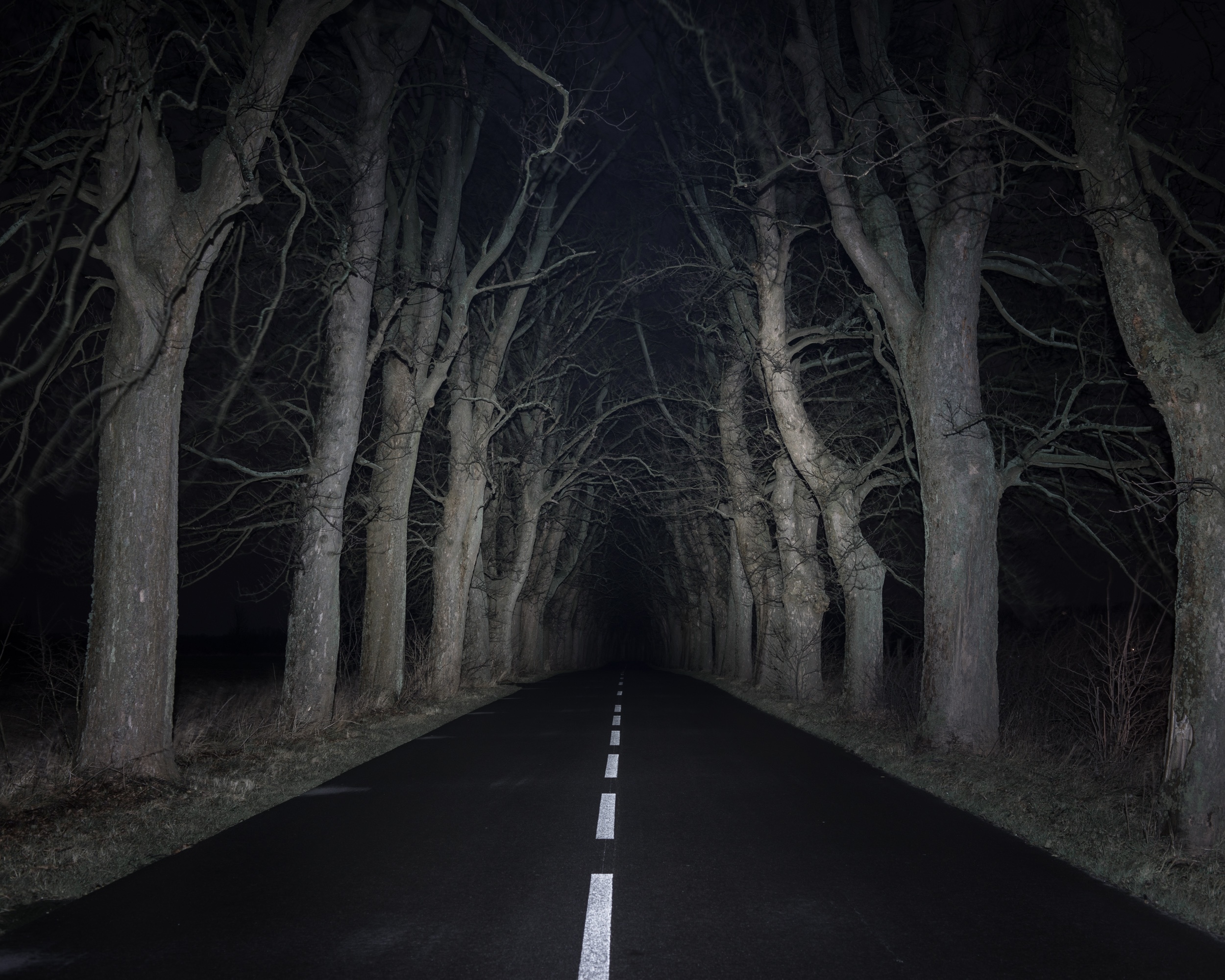Borderlands
Borderlands

Place seems to play a key role in Lynch’s films, as if he wanted to demonstrate that this spatially limited energy field influences, or even causes, dramatic events. Light and darkness in his movies denote presence or lack thereof. A bright window in the dark means that the building isn’t empty, though often we don’t know who is there. Strong light of unknown source creates the disturbing sense that there is something outside the frame, watching it like the viewers looking at the cinema screen.
Employing this method to ‘portray’ Poland, Rogiński creates its peculiar representation, based on the dissociation caused by looking at the domestic landscape with a Lynchian gaze. This is particularly evident in the photograph of a road illuminated by car headlights. The image resembles a still frame from Lost Highway, but soon we recognise tourist trail marks on the trees, and the poor quality of the tarmac looks familiar, too.
Photographed film scenes are like suspense extended into infinity. In Lynch’s movies, static shots build tension by revealing the elusive present of a given scene and a phantom form of memory contained in it. A building, a forest clearing, a meadow or a night lamp suggest something happened here in the past, something that may affect the future. The past and the future remain an impenetrable mystery, and we are never able to reconstruct the entire course of events – we can only compare what we are seeing now with what we saw a moment ago and what we expect to see.
In photography, we have only one, still ‘film frame’, so no additional information is available about what was ‘before’ and what will be ‘after’. The photographed places remain enigmatic: we don’t know their history and don’t know what may have happened in them. On the other hand, Rogiński shows images that we know very well, that we can even describe as ‘typically’ Polish, even though ‘typically’ Lynchian at the same time. The veil of mystery drops suddenly when we realise that we don’t need to ‘know’ what happened here, because we ‘can’ imagine it.
Hubert Gromny, Forgetting Poland
Size of works 110 x 136 cm, inkjet print on cotton paper
Edition 5 + 1 AP
.svg)
























